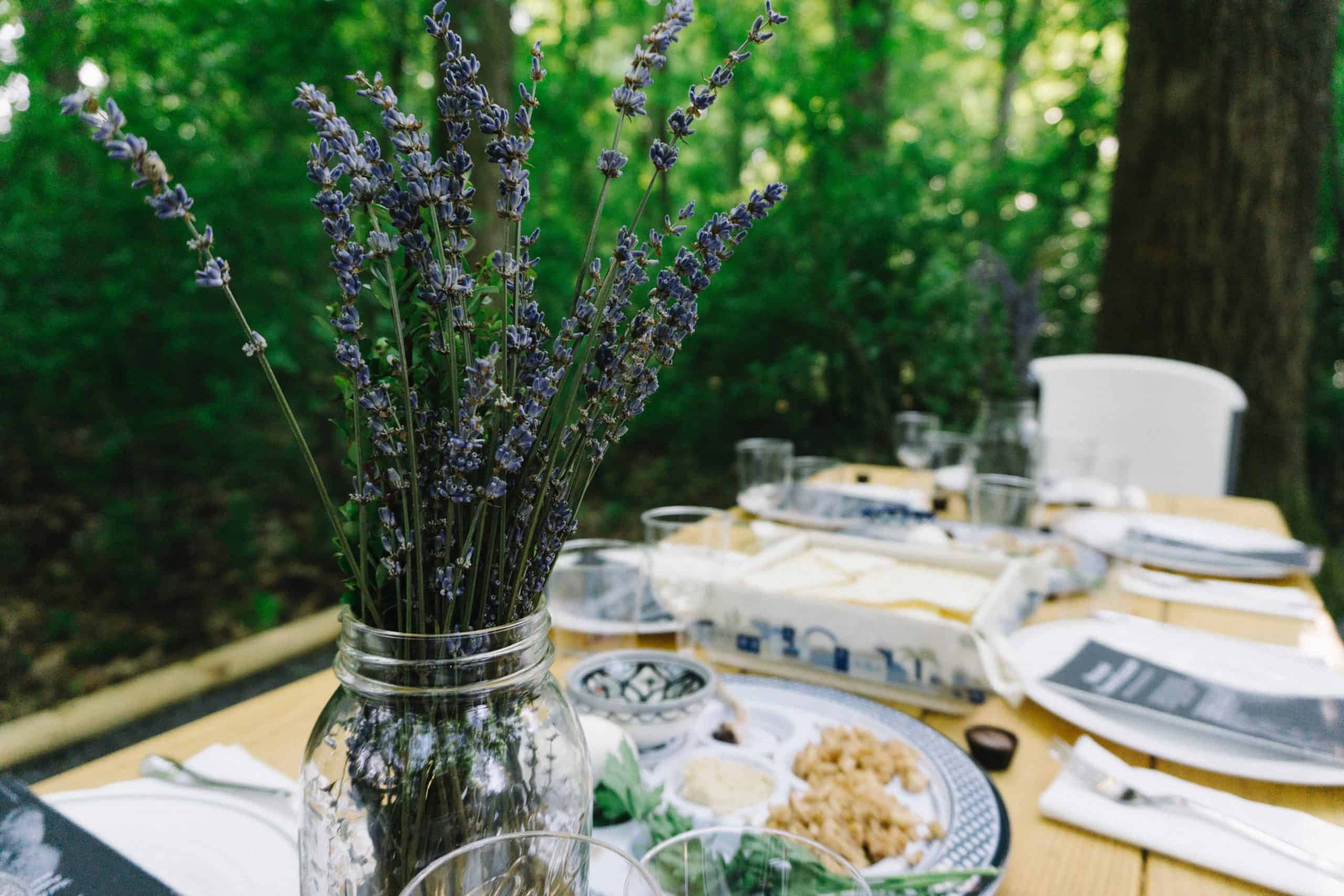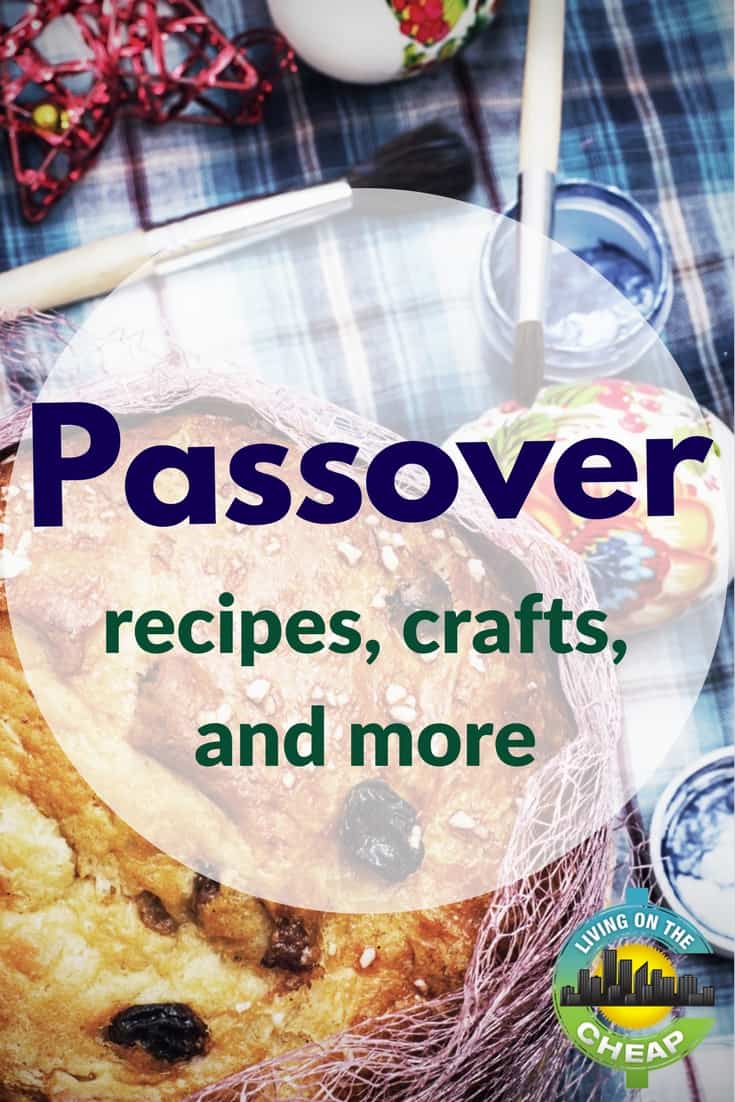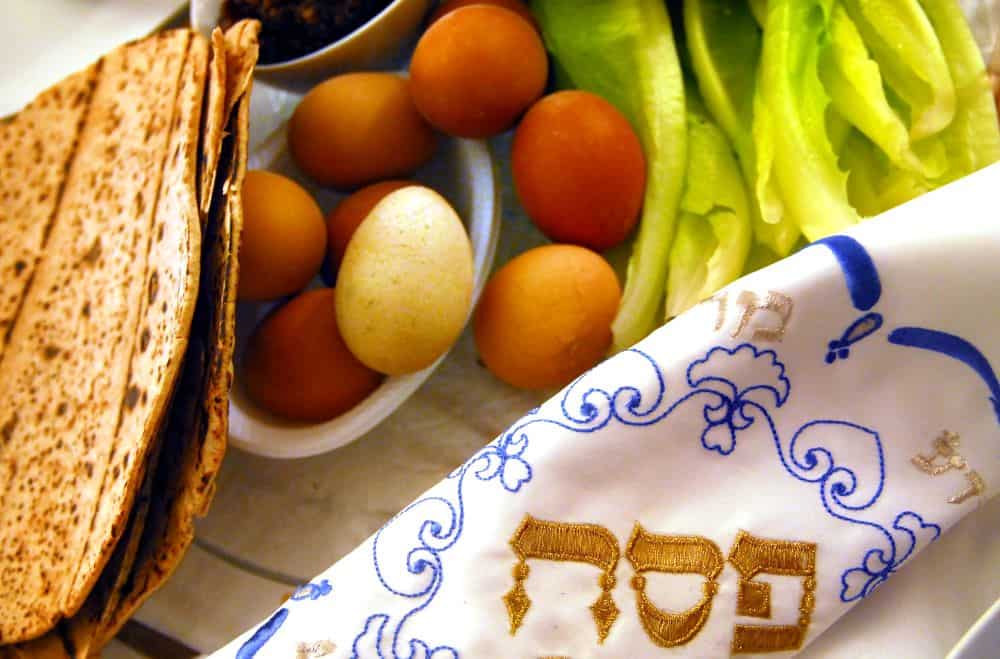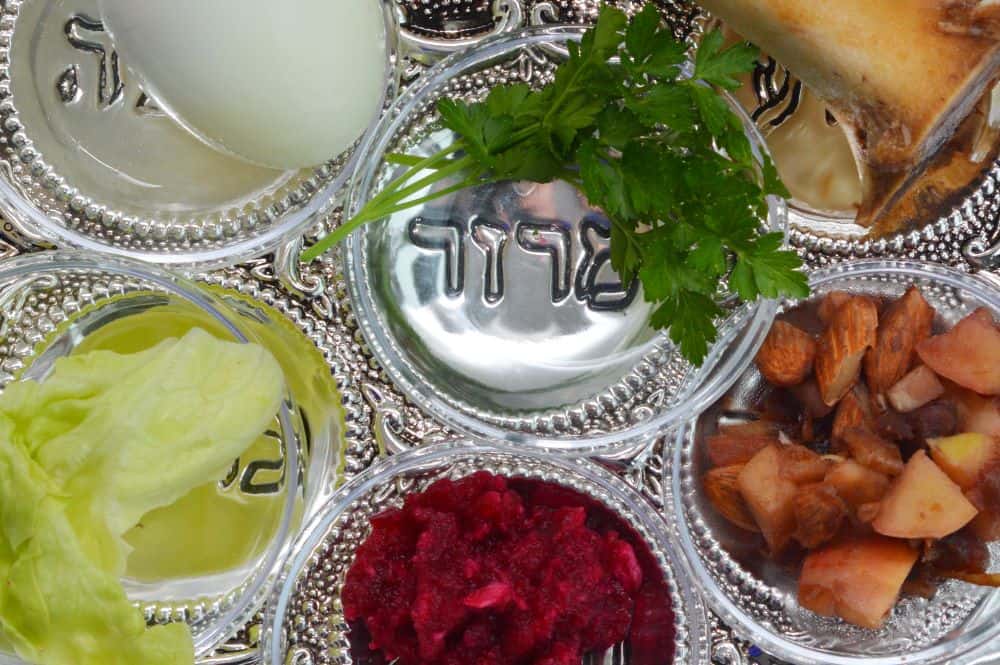Passover is normally a holiday for gathering friends and family. Even though the health restrictions of recent years have eased in most places this spring, many families discovered that technology helped them include loved ones from both near and far in the celebration — and that’s a new tradition many people may want to continue. So read on for Passover ideas for family members both young and old, near and far.

Photo: Phil Goodwin on Unsplash
Passover this year, 2024, is from sundown April 22 to sundown April 30. Traditionally, a Seder is held the first two nights, although it can be held other nights as well.
Passover recipes
Among the traditional foods served at Passover are brisket, roasted chicken, matzo ball soup, potato kugel and coconut macaroons. (We’re using the Webster’s Dictionary spelling for the unleavened bread product.) More people than ever are cooking this year, and we’ve found these Passover recipes.
- 25 ways to use Matzo
- Who needs bread? Here are 31 Passover desserts.
- Passover pizza with crispy cauliflower crust
- Passover recipes from your favorite Food Network chefs
- 25 vegetarian Passover recipes
- Chabad Passover recipes
- Bon Appetit Passover recipes
- Allrecipes top Passover recipes
- 23 Passover Dinner Recipes from Delish
- Coconut macaroons
Passover games and fun for the kids
- DIY origami jumping frogs and 10 plague puppets for the Seder.
- Free Seder kit for toddlers and preschoolers.
- Passover online games, videos, songs, coloring pages and more.
The story of Passover
Passover commemorates the biblical story of Exodus, when Hebrew slaves were freed from bondage in Egypt. The story is told in the Book of Exodus, Chapters 1-15. So, Passover is a celebration of freedom.
When the Israelites were freed, legend has it that they left in a hurry and could not wait for their bread dough to rise, which is why no leavened (raised) bread is eaten during Passover. Instead, it is replaced by matzo (also spelled matzoh or matzah), a flat, unleavened bread. Passover is observed by avoiding chametz or leavened bread (including even the presence of chametz in the house).
The first night of Passover begins with the Seder, a ceremonial meal containing the following six symbolic foods on a plate, used in an orderly ritual during the telling of the story of the Exodus.
Passover symbolism
The items on the Seder plate each represent something about that story. Here’s a very brief description of each of those objects. You will certainly find other interpretations of the symbolism of each of these objects.
- Shank bone (zeroa): a roasted bone that represents the lamb sacrifice made by the ancient Hebrews.
- Boiled/roasted egg (beitzh): stands in place of a sacrificial offering performed in the days of the Second Temple
- Maror (bitter herb): Horseradish is commonly used, but any bitter herb will work. It refers to the bitterness of slavery.
- Charoset: A sweet mixture of apples, nuts, wine and cinnamon, which represents the mortar the Hebrew slaves used to make bricks.
- Karpas: A green vegetable, usually parsley, dipped into salt water or vinegar, symbolizing the tears of the slaves.
- Hazaret: A second bitter herb, with the same symbolism as Maror.
More about the Seder
Other elements of the Seder that you might have heard about:
- 4 glasses of wine (or juice) are consumed by participants.
- Matzo, unleavened bread, is a big part of Passover. It reminds us of the haste with which the Jews left Egypt.
- The Afikomen is a piece broken off from the matzo during the Seder. Many families’ traditions call for it to be hidden. Then, the children look for it and return it for a reward. There are other variations of this tradition. For instance, in some families, the children steal it and ransom it for a reward.
- The 4 questions: traditionally, the youngest child recites the “4 questions,” which cover the basics of why Passover is special and important.
Print the Haggadah
The Haggadah is the book that guides participants through the Seder. The word Haggadah means “telling,” as it tells the story of the Exodus from Egypt. You can purchase a Haggadah, but there are countless versions that you can download and print, for personal use. Here are a few:
- Hebrew/English Haggadah, from Chabad
- Coloring Book Haggadah
- Contemporary Haggadah from JewishBoston
- Build-Your-Own Haggadah
- Haggadah for children with special needs
How to host a video Seder
It’s not unheard of for people to use videoconferencing to share a celebration with far-flung friends and relatives, but during the pandemic it was done on an unprecedented scale. It may be a new tradition worth keeping even as other pandemic practices are abandoned.
All of the popular video call platforms work fine for an online Seder. However, it’s tricky to use technology for the Seder because there are differing interpretations of Jewish laws that govern work during the Sabbath and on holidays like Passover.
Jews with different practices will have different levels of concern about using electronics during the Seder. For some, it is not an option. In those cases, why not have a pre-Seder Zoom gathering? Please consult your own Rabbinic authority to verify that what you’re planning is consistent with your practice and belief.
Some Jewish authorities have suggested:
- Activating the Zoom meeting before sundown (keeping in mind the time zones of all who are participating)
- Using a virtual assistant, like Siri or Alexa, to activate the stream. See Streaming Seder, from The Rabbinical Assembly.
If you are in different time zones, start early enough so that whoever lives farthest east will be able to sign off before candle-lighting arrives in their time zone.
You can also send a free Passover e-card from Chabad.



